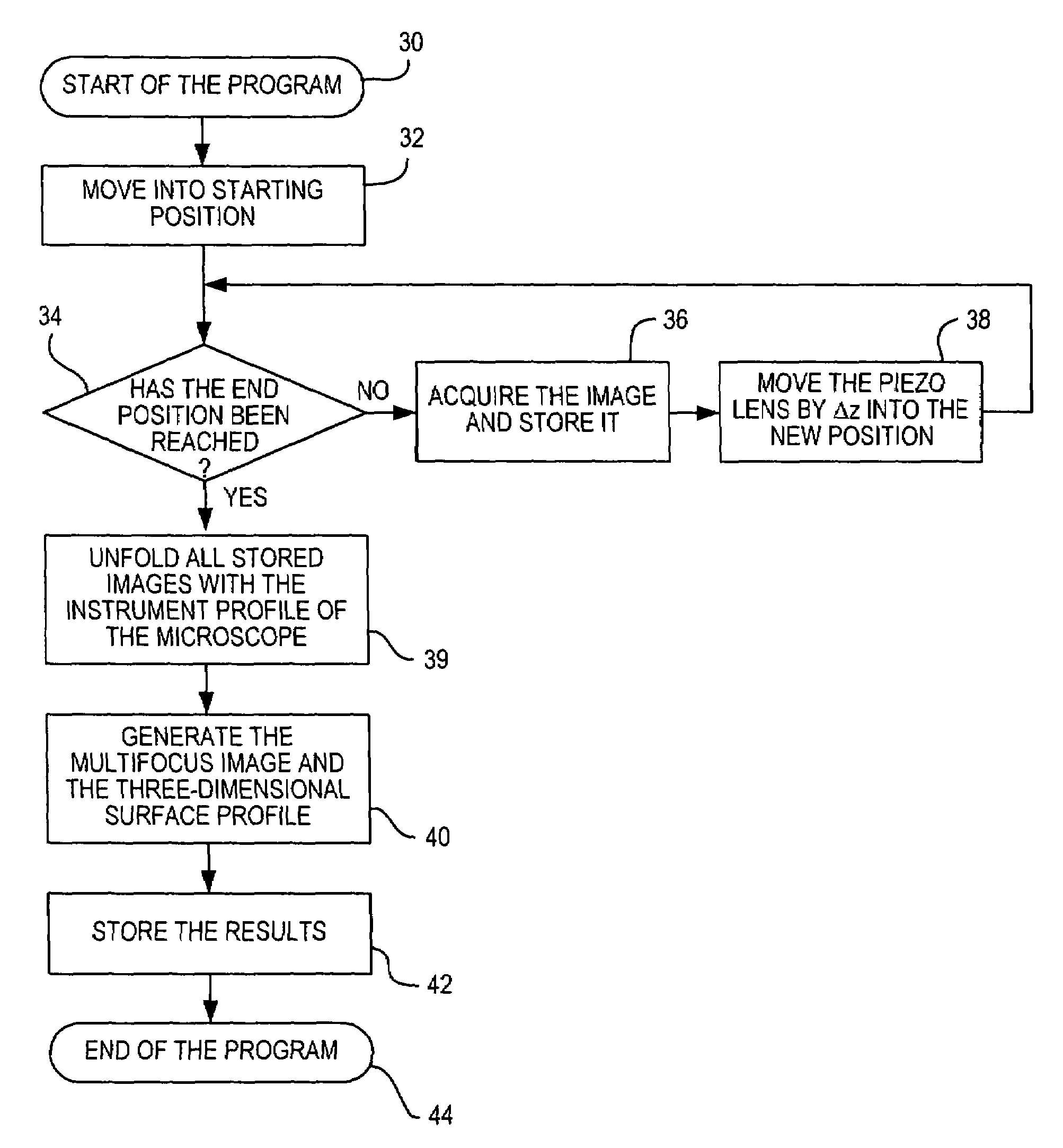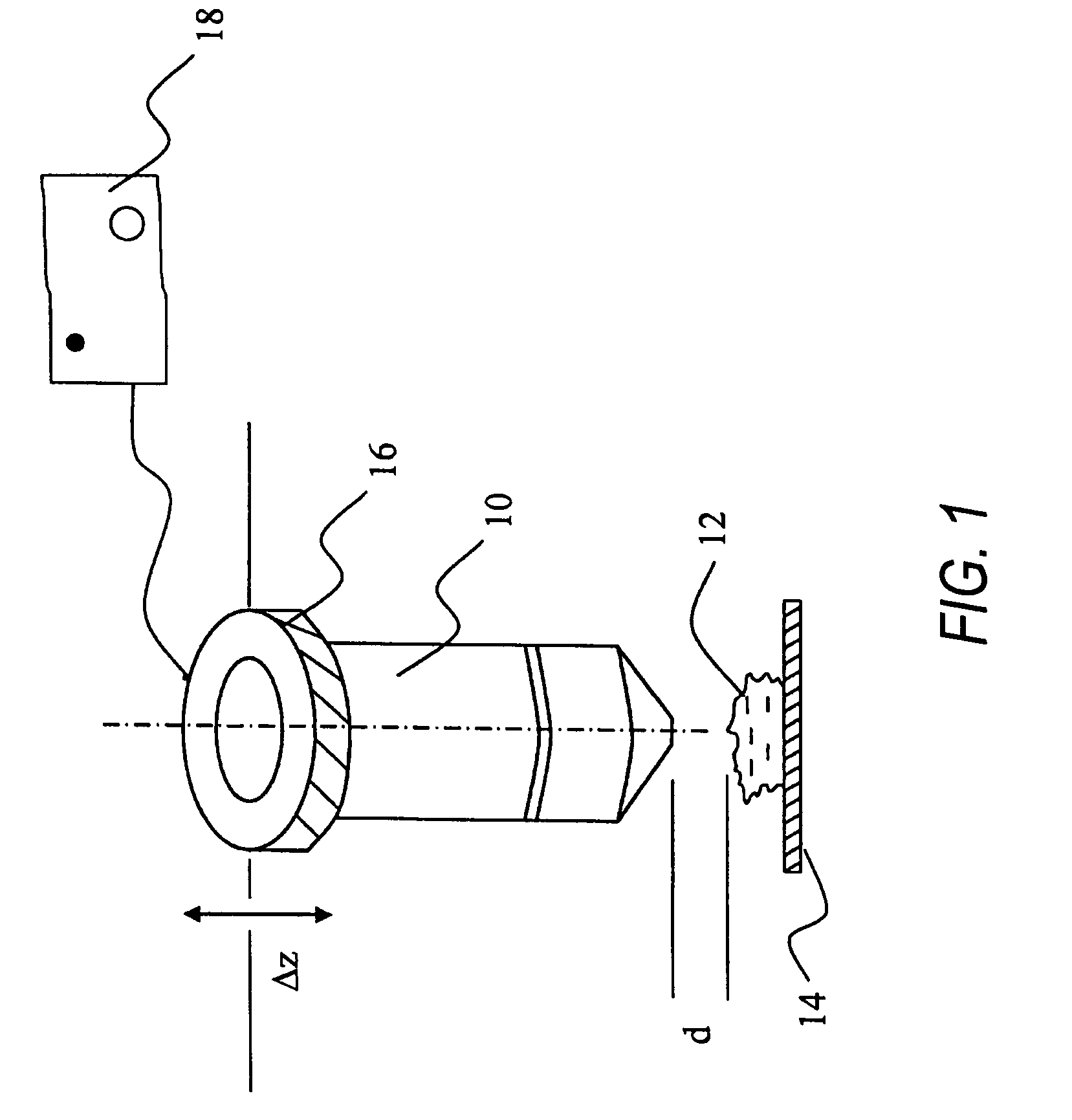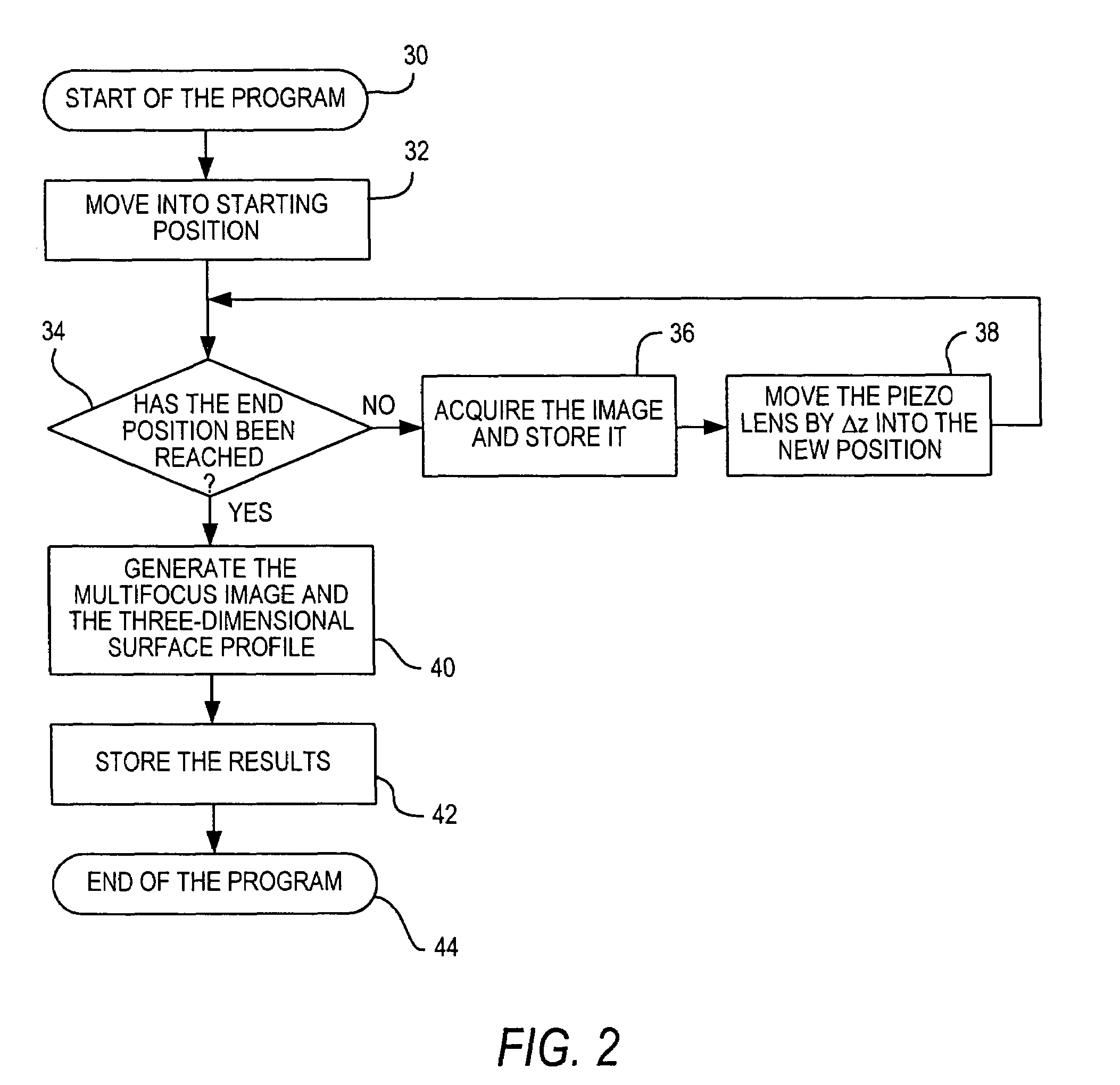Method and device for optically examining an object
a technology of optical examination and object, applied in the field of optical examination of objects, can solve the problems of limiting the speed with which individual image stacks can be recorded, high cost of optical components employed in confocal scanning microscopy, and requiring a great deal of adjustment work, so as to improve the computation speed, the sharp image area of each plane can be ascertained more easily, and the effect of increasing the computation speed
- Summary
- Abstract
- Description
- Claims
- Application Information
AI Technical Summary
Benefits of technology
Problems solved by technology
Method used
Image
Examples
Embodiment Construction
[0042]FIG. 1 schematically shows a section of a device for examining an object with a piezo-controlled lens. A lens 10 serves to examine an object 12 that has been placed onto an object stage 14. In order to generate an image with depth of focus as well as a three-dimensional surface profile of this object, according to the invention, a series of individual images are recorded, whereby each of these individual images lies in different z planes of the specimen. For this purpose, the focus of the lens 10 in the specimen must be positioned in such a way that it lies in the desired plane. That is achieved by adjusting the distance d between the lens and the object. In order to do so, the lens is provided with a piezo actuator 16 that is coupled to a control device 18. The piezo actuator 16 can be actuated with the control device 18 so that the lens 10 is moved, as is indicated by the double arrow. In this manner, the focus inside the object 12 can be adjusted with the piezo-controlled l...
PUM
 Login to View More
Login to View More Abstract
Description
Claims
Application Information
 Login to View More
Login to View More - R&D
- Intellectual Property
- Life Sciences
- Materials
- Tech Scout
- Unparalleled Data Quality
- Higher Quality Content
- 60% Fewer Hallucinations
Browse by: Latest US Patents, China's latest patents, Technical Efficacy Thesaurus, Application Domain, Technology Topic, Popular Technical Reports.
© 2025 PatSnap. All rights reserved.Legal|Privacy policy|Modern Slavery Act Transparency Statement|Sitemap|About US| Contact US: help@patsnap.com



